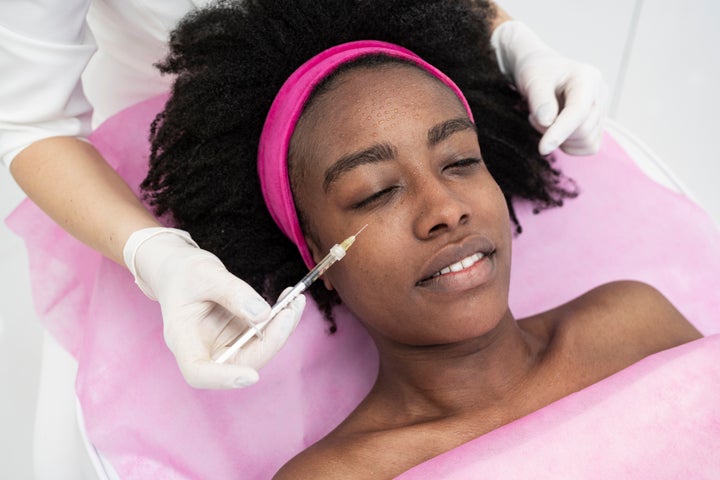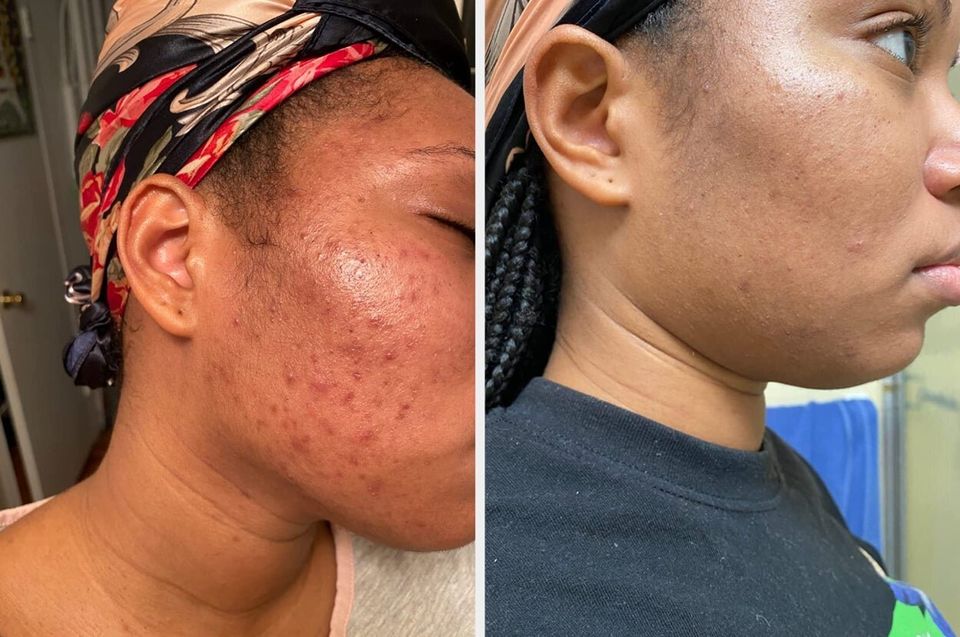
For people who grew up in the ’90s and 2000s, plastic surgery of any kind was still very much in its “hush-hush” era. While there was immense pressure to never age, it was still taboo to admit to receiving any kind of medical enhancements.
But things are different in the 2020s, the era of TikTok.
Now, celebrities and influencers are more open regarding their anti-aging treatments. On the one hand, this sheds some much-appreciated transparency that explains why so many famous people seem to age differently than the rest of us. But the greater awareness around these procedures has also normalized them, causing many viewers to wonder, “Do I need to get this procedure, too?” And it’s affecting people at a younger and younger age. (Ever heard of “baby Botox”?)
So, are these treatments and procedures appropriate for everyone? Considering so many followers of beauty-focused social media accounts are below the age of 25, could these young users be influenced to get anti-aging treatments that are detrimental in the long run?
We asked four dermatologists whether they think their younger patients should consider baby Botox and other trendy anti-aging procedures.
There’s one procedure dermatologists say MIGHT be appropriate in your 20s
“‘Baby Botox’ refers to the use of targeted neuromodulators (such as Botox)... at lower doses than traditional dosing,” said Dr. Ahuva Cices, a cosmetic dermatologist and assistant professor of dermatology at the Icahn School of Medicine at Mount Sinai Hospital in New York. “This allows for more subtle, softer results.”
Essentially, this smaller amount of neurotoxin creates less of the “frozen” look that results from Botox’s muscle-paralyzing effect.
“When patients first get Botox, it’s very common for them to allude to, ‘Don’t give me too much. I still want to be able to show my expressions and smile and emote,’” said Dr. Teo Soleymani, a California-based, double board-certified dermatologist.
With the lower dosages of baby Botox, patients can enjoy the best of both worlds.
“Instead of 30 to 40 units for muscle groups, 10 to 20 units are used instead,” said Dr. Elaine Kung, a board-certified dermatologist, assistant professor of dermatology at New York Presbyterian-Weill Cornell Hospital, and founder of Future Bright Dermatology. “Baby Botox prevents lines from deepening while preserving facial expression in people who are younger.”
But these lower Botox dosages might not be suitable for all patients. If you already have prominent lines, even the full dosage of Botox will only do so much.
“We found that [Botox] doesn’t do much for [deep] wrinkles that are already formed,” Soleymani said. “What we found is that [Botox] is much better at paralyzing the muscles that form dynamic lines, or lines that show up during movement.”
That’s why many dermatologists recommend that patients interested in Botox begin treatment as early as their 20s or 30s ― whenever they first notice wrinkles and lines starting to form when their face is at rest.

“The best way to treat a wrinkle is to address it early before it permanently sets in, or to prevent it from developing at all,” said Dr. Joshua Zeichner, a New York-based board-certified dermatologist and associate professor at the Icahn School of Medicine.
But if you aren’t yet seeing the first signs of wrinkles, the dermatologists suggest skipping baby Botox. “If a patient does not have any lines, then I do not recommend getting Botox,” Zeichner said.
It’s difficult for medical professionals to determine which muscles need to receive Botox if there are no lines showing where long-term wrinkles could develop in the first place. It’s also important to remember that the facial structure you have in your teens and early 20s might not be the same structure you have later in life.
“If your facial musculature and anatomy are still developing, which is in your teenage years, then I think [Botox] is premature,” Soleymani said.
The procedures derms say you should NOT get in your teens or 20s
“There is a trend among younger patients that follow various aesthetic and beauty accounts on TikTok and Instagram requesting more invasive and advanced treatments,” Cices said. But the dermatologists we spoke with all warned against getting the following procedures at a young age.
Fillers
Most of us are aware, to some extent, that many beauty standards are cyclical—the pencil-thin eyebrows of the ’90s and 2000s giving way to the thick brows of the mid-2010s before laminated eyebrows took the spot as the current eyebrow trend.
The fact that many hyaluronic fillers supposedly dissolve naturally, or could be dissolved with hyaluronidase injections, gave many people peace of mind that fillers would be a “reversible” procedure once the full-lip trend was “out.”
However, Soleymani pointed out that while these fillers may be reabsorbed and dissolved to a certain extent, the residue of fillers can remain at injection sites.
“There are many people I’ve operated on which I’ve pulled out filler from their cheek, face, or lip, and they haven’t had any injections for five, six, seven years,” Soleymani said.
He also noted that getting fillers too early and too often can potentially change the structure of our facial features as we inject more and more over time, as evidenced by the infamous “duck lips.”
“Over time, the weight of that filler persists in the lip, and then you get elongation and this duck billing that occurs,” Soleymani said. “Trying to correct those is so much harder than just not having it done too early in the first place.”
Surgeries like buccal fat removal, mini face lifts and brow lifts
It’s safe to say that current beauty trends lean more “mature,” with a dramatic, angular, “snatched” look. And many people are getting procedures like cat- and fox-eye surgeries, brow and mini face lifts, and buccal fat removal to achieve this aesthetic.
However, younger patients should be cautious with these surgeries ― particularly with buccal fat removal ― as their faces haven’t fully developed yet.
“Adolescence is a rollercoaster of hormonal and physical changes, often bringing fluctuations in weight. These fluctuations can dramatically affect the size and position of the buccal fat pads, making any surgical interventions premature and unpredictable,” Kung said. “Think of it like trying to tailor a suit before you’ve finished growing ― you might end up with an ill-fitting look later on.”
It might be tempting to think “I can fix those issues later down the line with more surgeries.” But it’s important to remember that surgery has limitations. Every time you go under the knife, you risk further complications and the development of scar tissue.
“Any time you manipulate something, you are going to leave long-term, permanent footprints in its place,” Soleymani said. “Obviously, there’s only so much skin that can be stitched and cut.”
So if you’re young and there’s a specific feature you’re insecure about, or something you’d like to change, sometimes the best thing you can do for yourself is wait.
“Generally, the rule of thumb is anything that you want to do that can change the appearance or the structure of your face or skin, you should do when your body reaches a more static time in your life, when you’re not continually developing or [changing],” Soleymani said.
Social media, your dermatologist, and you
With the rise of social media and the various filters that make our favorite influencers look flawless 24/7, as well as the increased time we’ve spent staring at our faces on video calls, our standards of beauty have become warped.
“I had way fewer patients in their early 20s asking for filler three years ago than I do now. A lot of them complained about the way they look on Zoom or video conferencing,” Soleymani said. “They had more time to spend in front of Zoom, with virtual meetings, virtual work settings, and more time just in idling, which resulted in more scrutiny of their appearance.”
Before rushing out to get surgery, it could be a good idea to evaluate your relationship with social media and Zoom. (Rest assured, no one looks good on Zoom.)
And if you do decide to move forward with receiving any kind of treatment or procedure, remember that what worked for your friend or your favorite influencer might not be suitable for you.
“It is important to recognize that every patient is unique and can benefit from a personalized approach prior to receiving any aesthetic treatments,” Cices said. “When patients come in for cosmetic consultations, we discuss treatment goals and evaluate what can be done to achieve those long-term results.”
